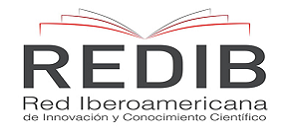Swimming teaching program to improve learning in adults
Keywords:
Swimming, Adult Learning, Teaching ProgramAbstract
Objective: To evaluate the effect of a swimming program on the improvement of swimming skills in adults.
Methods: A qualitative study was conducted with 25 adults aged 18 to 64 years, using a descriptive-analytical and field approach. An observation guide was applied to determine whether a swimming program with detailed activities for adults leads to improvements in learning the sport.
Results: By methodically applying the phases of familiarization, conditioning, exploration, use, and exploitation, along with exercises and playful activities, the 25 adults learned to swim the front crawl style in 20 classes. This resulted in improvements in coordination, as well as physical and psychological health, without any pathologies arising from their practice.
Conclusions: The applied program achieved the expected learning outcomes, demonstrating that, when implemented with adults, it produces the same results as when applied to children. The main conclusion is that learning is not limited by age.
Downloads
References
Caballero, E., & Aguilar, K. (2020). Estrategia metodológica para la enseñanza de la natación en personas con discapacidad visual. Revista de Ciencias Pedagógicas, 7(2), 103–109.
Campoverde, J. (2016). Natación para adultos mayores como estrategia para fortalecer las articulaciones, segmentos musculares y reducir las lesiones osteomusculares [Universidad Técnica de Machala]. Universidad Técnica de Machala. https://n9.cl/7c2mh
Cardona, K. (2020). La importancia del desarrollo motor en el aprendizaje de los niños. Disruptores, 10, 1–5.
Constitución de la República del Ecuador. (2008). Constitución de la República del Ecuador 2008. Incluye reformas (pp. 1–136).
Contreras, C. (2011). La importancia de la práctica de la natación en la educación de los niños y las niñas. Revista Digital Buenos Aires, 16(161), 1-8.
De Lanuza, F., & Torres, A. (2005). 1060 ejercicios y juegos de natación (E. Paidotribo, Ed.; 10th ed.). Paidotribo.
García, A. (2021). 5 razones para entrenar los cuatro estilos en natación. Planet Triatlon. https://planetatriatlon.com/5-razones-entrenar-los-cuatro-estilos-natacion/
Hernández, A. (2021). Los estilos de natación. I-Natación, 1–6. http://www.i-natacion.com/articulos/modalidades/natacion1.html
Hernández Sampieri, R., Fernández Collado, C., & Baptista, M. del P. (2014). Metodología de la Investigación. In M. G. Hill (Ed.), Mc Graw Hill Education (6ta Edició). Mc Graw-Hill/Ineramericana Editores, S.A.
INEC. (2015). Pirámide de población. Censo 2001 Cantón Portoviejo: Población de 5 años y más , por sexo y áreas , según niveles de instrucción . Censo 2001. https://www.ecuadorencifras.gob.ec/documentos/web-inec/Bibliotecas/Fasciculos_Censales/Fasc_Cantonales/Manabi/Fasciculo_Portoviejo.pdf
Mármol Escobar, O. J. (2017). La Enseñanza Aprendizaje de la Natación para el dominio de las habilidades motoras en niños y niñas de 6 a 12 años en el Centro Turístico La Rueda [Universidad Técnica de Ambato]. In Repositorio Institucional de la Universidad Técnica de Ambato (Issue 03). https://repositorio.uta.edu.ec/bitstream/123456789/2419/1/631 ING.pdf
Ministerio del Deporte. (2020). Plan Nacional de Reactivación (p. 21). Registro Oficial. https://www.gestionderiesgos.gob.ec/wp-content/uploads/2020/06/2002.-PLAN-NACIONAL-AF.pdf
Muñoz, L., Monreal, C., & Marco, M. (2001). El adulto: Etapas y Consideraciones para el Aprendizaje. In Eúphoros, 103.
Nunes, L. (2020). Natación Deportiva y Salud Mental: ¿Hay una relación? Pensar En Movimiento. Revista de Ciencias Del Ejercicio y La Salud, 18(2), 1–5.
Organización Mundial de la Salud. (2020). Actividad física. Panorama de La Salud: Latinoamérica y El Caribe 2020, 1–11. https://doi.org/10.1787/bb392bd3-es
Terrero, R. (2010). Propuesta de un plan de clases para mejorar el aprendizaje de la formación básica de la natación en adultos de 20 a 30 años de edad, en el plan masivo de verano , en la comunidad de Cabacú del municipio Baracoa. EFDeportes, 15(151), 1–16.
Downloads
Published
How to Cite
Issue
Section
License
Copyright and Licensing
For all articles published in Atena Journals, copyright is retained by the authors. Articles are licensed under an open access Creative Commons CC BY 4.0 license, meaning that anyone may download and read the paper for free. In addition, the article may be reused and quoted provided that the original published version is cited. These conditions allow for maximum use and exposure of the work, while ensuring that the authors receive proper credit.
Reproducing Published Material from other Publishers
It is absolutely essential that authors obtain permission to reproduce any published material (figures, schemes, tables or any extract of a text) which does not fall into the public domain, or for which they do not hold the copyright. Permission should be requested by the authors from the copyrightholder (usually the Publisher, please refer to the imprint of the individual publications to identify the copyrightholder).
Permission is required for:
- Your own works published by other Publishers and for which you did not retain copyright.
- Substantial extracts from anyones' works or a series of works.
- Use of Tables, Graphs, Charts, Schemes and Artworks if they are unaltered or slightly modified.
- Photographs for which you do not hold copyright.
Permission is not required for:
- Reconstruction of your own table with data already published elsewhere. Please notice that in this case you must cite the source of the data in the form of either "Data from..." or "Adapted from...".
- Reasonably short quotes are considered fair use and therefore do not require permission.
- Graphs, Charts, Schemes and Artworks that are completely redrawn by the authors and significantly changed beyond recognition do not require permission.
Obtaining Permission
In order to avoid unnecessary delays in the publication process, you should start obtaining permissions as early as possible. If in any doubt about the copyright, apply for permission. Atena Journals cannot publish material from other publications without permission.
The copyright holder may give you instructions on the form of acknowledgement to be followed; otherwise follow the style: "Reproduced with permission from [author], [book/journal title]; published by [publisher], [year].' at the end of the caption of the Table, Figure or Scheme.














